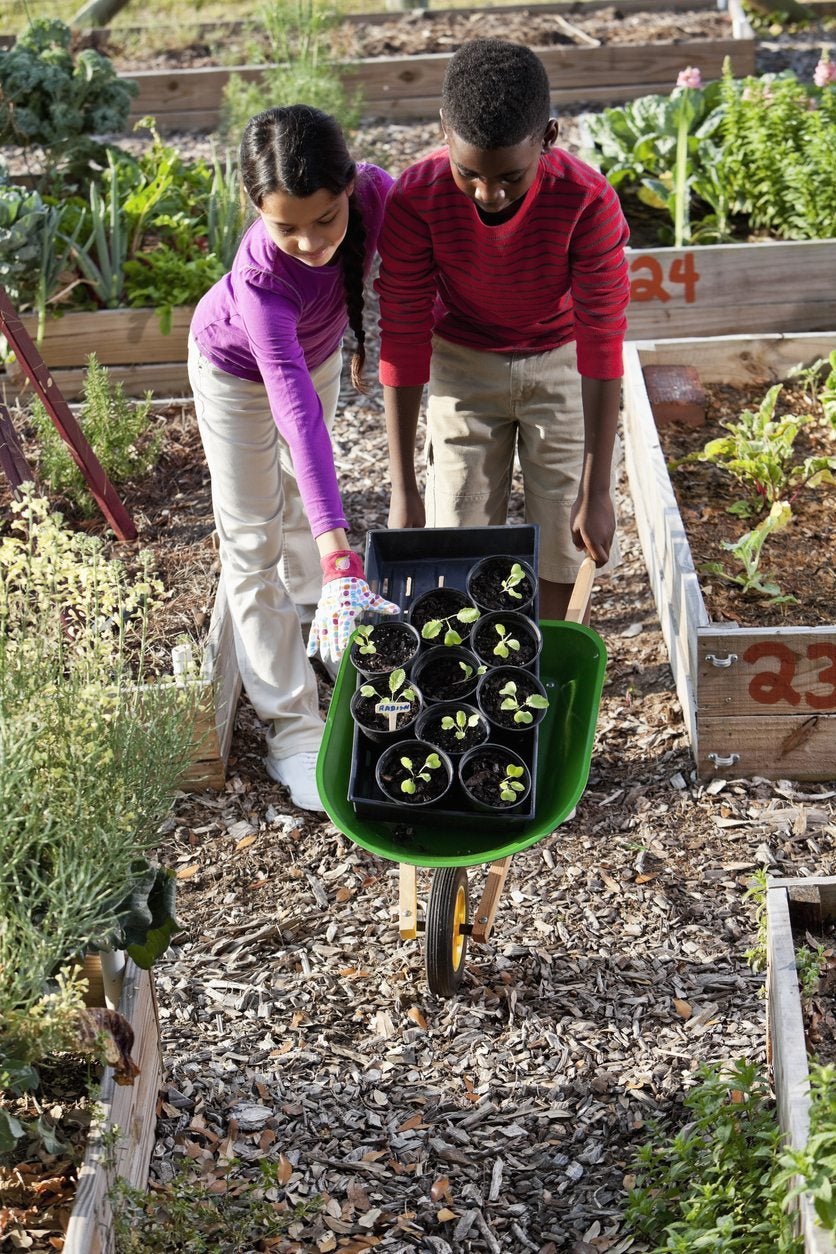Gardens For Kids: What Is A Learning Garden


Gardens for kids can be great learning tools, but they are also fun and practical. Teach your children about plants, biology, food and nutrition, teamwork, weather, and so many other things just by growing a garden together.
What Is a Learning Garden?
A learning garden is typically a school garden, but it may also be a community garden or even just a family’s backyard garden. Regardless of location and how many people are involved, gardens for education are outdoor classrooms, gardens designed specifically to get children involved and to teach them a variety of lessons.
There are many lessons that can go into a learning garden. You can design yours to be focused on one or two, or on a variety. For instance, you might want to start a garden with your children to teach them about food and nutrition or about self-sufficiency. Improving kids' diets, for example, could help in the fight against obesity. Getting kids involved in growing vegetables can help them learn to like the things they grow, making it easier to get them to "eat their veggies." In some cases, kids may even ask mom or dad, "Can we have a garden?"
Gardens for kids may be more focused on science, how plants grow and how they are part of a larger ecosystem. And, who knows, perhaps one day these children could even persuade school cooks to incorporate produce from their school gardens into school lunches.
How to Make a Learning Garden
Making a learning garden doesn’t have to be much different from any other garden. Here are some learning garden ideas to get you started:
- Start a vegetable garden to get your kids involved in their own nutrition and to encourage better eating habits. Extra harvested vegetables can be donated to a local soup kitchen, teaching kids important lessons about giving.
- A native plant garden can help your kids learn about their local ecosystem and how plants support insects, birds, and other animals.
- A hydroponic or aquaponic garden is a great way to teach science lessons, like how plants get nutrients.
- A greenhouse garden allows you to grow plants year round and to grow those plants you might not otherwise be able to due to your local climate.
Any type of garden, big or small, can be a learning garden. Start out small if the idea is overwhelming, but most importantly, get the kids involved in it. They should be there right from the start, even helping with the planning.
Learn How One Garden Is Teaching Kids To Grow
Gardening tips, videos, info and more delivered right to your inbox!
Sign up for the Gardening Know How newsletter today and receive a free copy of our e-book "How to Grow Delicious Tomatoes".
Kids can help plan and use math skills and elements of design. They can also get involved with starting seeds, transplanting, fertilizing, watering, pruning, and harvesting. All aspects of gardening will help kids learn a variety of lessons, planned or not.

Mary Ellen Ellis has been gardening for over 20 years. With degrees in Chemistry and Biology, Mary Ellen's specialties are flowers, native plants, and herbs.
-
 Looking For Plants To Give You The Soft And Fuzzies? Try These 5 Fuzzy Leaf Plant Options
Looking For Plants To Give You The Soft And Fuzzies? Try These 5 Fuzzy Leaf Plant OptionsLovers of texture, drama, silver foliage and tactile plants will adore these special sensory garden additions. These fuzzy leaf plant options will leave you all aglow
By Susan Albert
-
 Get Ready For A Summer Of Hummers! Grow These Full Sun Hummingbird Plants and Flowers
Get Ready For A Summer Of Hummers! Grow These Full Sun Hummingbird Plants and FlowersIf you’re lucky enough to enjoy a sunny backyard, make sure you are maxing out on your pollinator opportunities and grow these full sun hummingbird plants and flowers
By Tonya Barnett